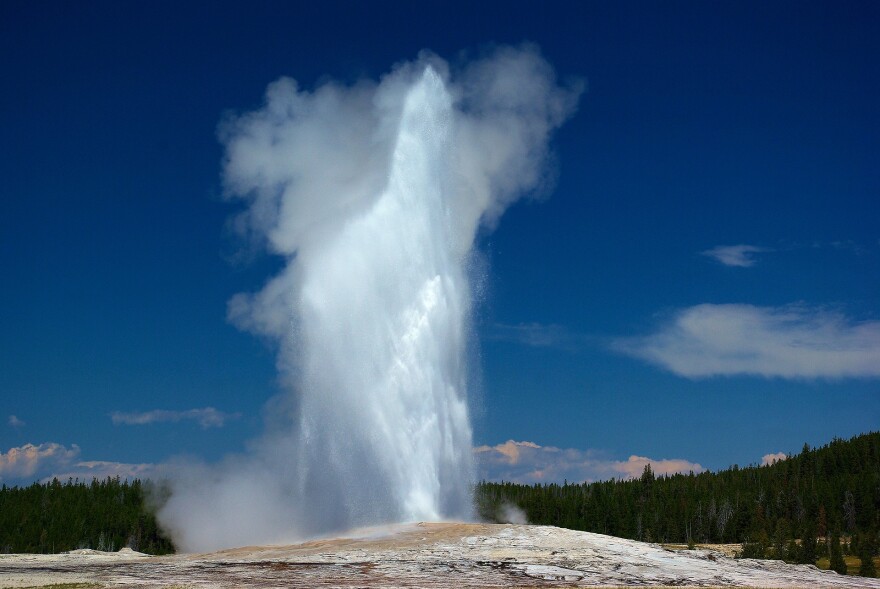Old Faithful is known for being, well, faithful. But it wasn't always that way. In fact, according to new research published in Geophysical Research Letters, it once stopped erupting for nearly 100 years.
The thing that clued researchers in to the possible inactive period were trees. Trees can't grow on a geyser's mound because the hot, alkaline water from the eruption kills them. But littered around Old Faithful's mound are mineralized tree stumps.
In fact, one park naturalist originally described them in the 1950s, which piqued US Geological Survey Research Geologist Shaul Hurwitz's interest.
"So I knew that there was something special when that tree was there. The geyser was probably not erupting just by expanding from what we know now," said Hurwitz. "So I was curious to know when that tree grew there to understand what were the conditions that led to that tree growing and what was for the geyser then that is different than it is today."
Hurwitz and his team collected samples from 13 tree stumps around the geyser for radiocarbon dating.
"The first batch we sent to the lab, and when we got the results, it was one of those too good to be true, all the results kind of clustered within about 100 years," said Hurwitz. "So to convince myself that that's a real result and not some random results, I sent another batch and those second batch also came exactly within the same about 100-year-old range, which is quite surprising."
After doing some necessary calculations, they found that that period fell about 800 years ago, at the tail end of a period known as the Medieval Climate Anomaly. This period was marked by an unusually warm, dry period that led to what the researchers termed a "megadrought" in the west. The researchers posit that the megadrought led to a reduction in Old Faithful's water source, lengthening the periods between eruptions until eventually, it stopped erupting altogether.
"That allowed the trees, which are lodgepole pines, which are very adaptable, so they can grow even under quite extreme conditions in Yellowstone, and they occupied the mound for that duration," said Hurwitz. "And then when climate conditions changed again, became a bit more wet, the geyser started erupting, and the trees died and no more trees grew since."
Recent droughts have caused the interval between eruptions to lengthen slightly, usually by about a minute or so, before returning to their regular 90-94 minute length with normal rainfall. As the climate continues to change, droughts are predicted to become longer and more intense and the researchers warn that this could cause Old Faithful's interval to become erratic, or possibly even stop the geyser from erupting again.
Have a question about this story? Contact the reporter, Ivy Engel, at iengel@uwyo.edu.








